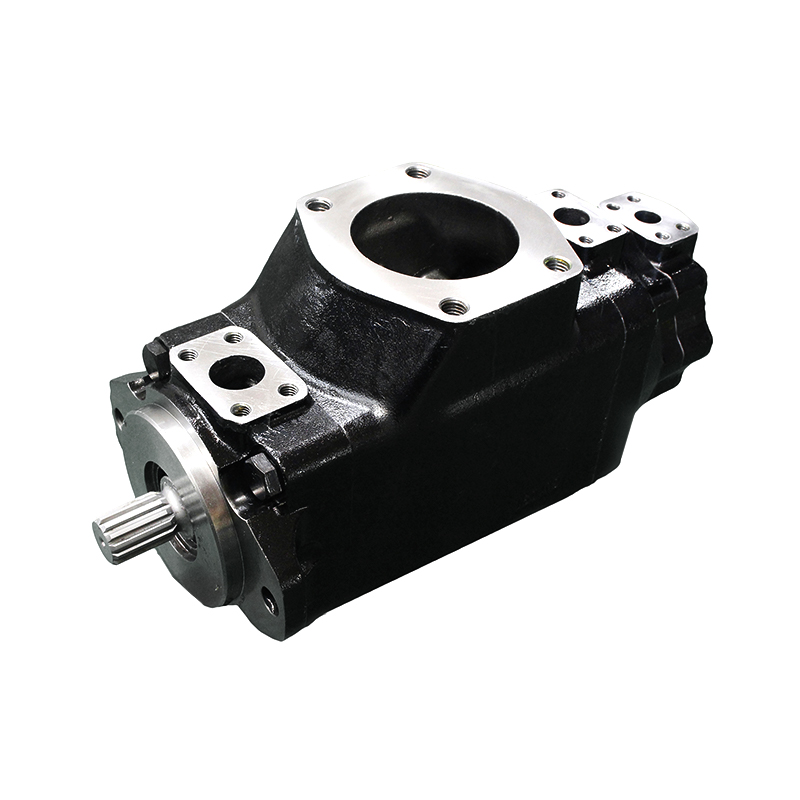Parker Denison vane pumps are a renowned line of hydraulic vane pumps widely used in industrial, mobile, and aerospace applications. Known for their reliability, efficiency, and versatility, these pumps play a critical role in hydraulic systems that require precise fluid flow and pressure control. This article provides an in-depth overview of Parker Denison vane pumps, covering their design, working principles, features, applications, advantages, and maintenance considerations.
Introduction to Parker Denison Vane Pumps
Parker Hannifin Corporation is a global leader in motion and control technologies, including hydraulic components. Denison Hydraulics, a brand now under Parker, has been producing high-quality vane pumps for decades. The Parker Denison vane pumps combine engineering innovation with durable construction, making them one of the most trusted choices for hydraulic power generation and fluid transfer.
Vane pumps are a type of positive displacement pump where a rotor with sliding vanes rotates inside a cam ring, creating variable volume chambers that move hydraulic fluid. Parker Denison vane pumps are designed for high performance, quiet operation, and adaptability in many challenging hydraulic environments.
Design and Construction
The core components of a Parker Denison vane pump include:
-
Rotor: A circular component mounted eccentrically inside the cam ring. The rotor holds multiple vanes in radial slots.
-
Van es: Typically made of carbon or other wear-resistant materials, vanes slide in and out of the rotor slots as it rotates, maintaining contact with the cam ring.
-
Cam Ring: An oval or circular ring surrounding the rotor, creating variable volume chambers between the rotor, vanes, and ring.
-
Inlet and Outlet Ports: Allow hydraulic fluid to enter and exit the pump chambers.
-
Pump Housing: Encloses and supports all internal parts, ensuring alignment and structural integrity.
The precise machining of these parts ensures minimal internal leakage and high volumetric efficiency. The materials used are chosen for durability under high pressure and resistance to wear and corrosion.
How Parker Denison Vane Pumps Work
The operating principle of Parker Denison vane pumps is based on positive displacement and variable volume created by the rotor and vanes inside the cam ring.
-
Intake Phase: As the rotor turns inside the cam ring, the vanes slide outward due to centrifugal force and maintain contact with the ring. This action creates expanding volume chambers at the inlet port. Hydraulic fluid is drawn into these chambers by the suction effect.
-
Transfer Phase: The rotor continues to rotate, carrying the trapped fluid in the chambers between adjacent vanes from the inlet side to the outlet side.
-
Discharge Phase: When the volume chambers reach the outlet port, the cam ring’s shape forces the vanes inward, decreasing chamber volume and forcing fluid out at high pressure.
Because the volume displaced per rotation is fixed (except for some variable displacement models), the flow rate of the pump is directly proportional to the rotational speed.
Types of Parker Denison Vane Pumps
Parker Denison offers several variants of vane pumps tailored for different needs:
-
Fixed Displacement Vane Pumps: These provide a constant flow rate proportional to shaft speed and are simple and cost-effective for many applications.
-
Variable Displacement Vane Pumps: These models allow adjustment of flow rate and pressure by changing the cam ring eccentricity or through a control mechanism. This offers energy savings and precise system control.
-
Heavy-Duty Vane Pumps: Designed for high-pressure industrial environments, these pumps feature reinforced construction and materials for long-lasting operation.
-
Mobile Equipment Vane Pumps: Tailored for construction, agricultural, and forestry machinery, these pumps emphasize reliability and performance in harsh outdoor conditions.
Key Features and Advantages
Parker Denison vane pumps are known for several beneficial features:
-
Quiet Operation: Compared to other pump types like gear or piston pumps, vane pumps typically run quieter due to smooth fluid flow and balanced forces inside the pump.
-
Smooth and Pulsation-Free Flow: The design provides a steady, continuous flow with minimal pulsation, important for precise hydraulic control.
-
Good Efficiency: High volumetric and mechanical efficiency reduce energy losses and heat generation.
-
Compact Size and Lightweight: Their relatively simple design makes them easier to install in tight spaces.
-
Self-Priming Capability: Vane pumps can draw fluid from a dry reservoir without external priming.
-
Wide Range of Viscosities: Suitable for pumping hydraulic oils with varying viscosities.
-
Durability: Robust materials and design allow long service life even in demanding applications.
-
Ease of Maintenance: The modular design allows easier servicing and parts replacement.
Common Applications
Parker Denison vane pumps find use across a broad spectrum of industries, including:
-
Industrial Hydraulic Systems: Used in manufacturing equipment, presses, injection molding machines, and material handling systems.
-
Mobile Hydraulic Equipment: Essential for excavators, loaders, cranes, agricultural tractors, and forestry machines.
-
Aerospace and Defense: Used in aircraft hydraulic systems for flight control and landing gear operation.
-
Marine Applications: Powering steering gear, deck machinery, and stabilization systems.
-
Energy Sector: Used in wind turbines, solar tracking systems, and oil and gas equipment.
-
Automotive Industry: Fuel and lubrication systems sometimes use specialized vane pumps.
Maintenance and Troubleshooting
Maintaining Parker Denison vane pumps properly is key to maximizing their lifespan and performance:
-
Regular Oil Checks: Use recommended hydraulic fluids and monitor oil cleanliness and viscosity.
-
Filter Maintenance: Keep inlet filters clean to prevent abrasive particles from damaging vanes and other components.
-
Periodic Inspection: Check for unusual noises, vibration, or temperature rise, which can indicate wear or cavitation.
-
Seal and Bearing Checks: Worn seals can cause leaks, and bearing wear can reduce efficiency and cause noise.
-
Rebuild Kits: Parker offers service kits with replacement vanes, seals, and other wear parts for overhauls.
Common issues include cavitation (caused by low inlet pressure or high fluid temperature), vane wear (due to contamination or improper lubrication), and internal leakage (due to worn parts).
Parker Denison vane pumps are trusted hydraulic components renowned for their reliable performance, efficiency, and versatility. Their carefully engineered design, combining a rotor, sliding vanes, and cam ring, delivers smooth and consistent hydraulic flow across a wide range of pressures and speeds. Suitable for industrial, mobile, aerospace, and many other applications, these pumps provide critical fluid power solutions.
Understanding their working principle, design features, and maintenance needs helps users maximize the benefits of Parker Denison vane pumps. Whether fixed or variable displacement, their adaptability and proven track record make them a top choice in the world of hydraulic power transmission.


 English
English русский
русский Español
Español عربى
عربى

